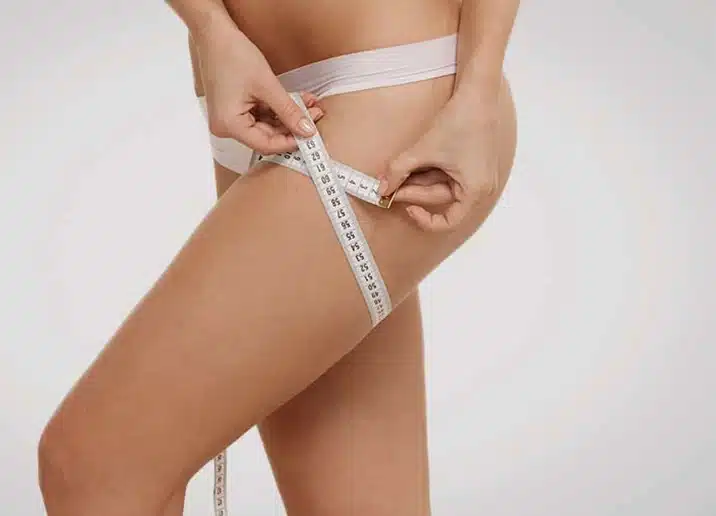Struggling to maintain your results after liposuction? A solid liposuction diet plan, along with surgery nutrition tips, can make all the difference in a healthy weight loss strategy. This guide will help you navigate your post–surgery nutrition, including liposuction diet recommendations and effective diet recommendations, ensuring your body heals while keeping those unwanted pounds at bay with healthy diet practices.
Discover the best foods to include in a healthy diet and what to avoid for optimal recovery from unhealthy eating habits. Learn how portion control, meal timing, and healthy eating habits play crucial roles in your success with a healthy diet. With the right approach, including healthy eating habits and a fat diet, you can enhance your results and boost your confidence, possibly with laser liposuction. Say goodbye to confusion and hello to a clearer path towards a healthier lifestyle. Let’s dive into essential tips that will support your journey and maintain your new silhouette effectively.
Key Takeaways
- Following a post-liposuction diet is crucial for recovery, so prioritize nutrient-rich foods to support your healing process.
- Include lean proteins like chicken and fish in your meals to help rebuild tissues and promote recovery.
- Incorporate probiotics, found in yogurt and fermented foods, to aid digestion and boost your immune system after surgery.
- Focus on easily digestible foods such as bananas and rice to minimize discomfort during the early stages of recovery.
- Avoid high-sugar and high-fat foods, as they can hinder healing and lead to unwanted weight gain post-surgery.
- Manage your weight effectively both before and after liposuction by maintaining a balanced diet and regular exercise to achieve lasting results.
Importance of a Post-Liposuction Diet
Recovery Support
A post-liposuction diet plays a crucial role in recovery. After surgery, the body needs time to heal. Proper nutrition helps speed up this process. Nutrient-dense foods provide vitamins and minerals essential for healing tissues. Foods rich in protein, like chicken and beans, help repair muscles. Healthy fats from avocados and nuts also support recovery.
Hydration is equally important. Drinking enough water aids in flushing out toxins. It also keeps skin hydrated, which can improve its appearance after surgery. Aim for at least eight glasses of water daily.
Nutrient-Dense Foods
Incorporating nutrient-dense foods into the surgery diet plan is vital. These foods include fruits, vegetables, whole grains, lean proteins, and healthy fats. They supply the body with energy and essential nutrients. For example, leafy greens are rich in vitamins A and C. These vitamins boost the immune system and promote healing.
Whole grains like quinoa and brown rice offer fiber that aids digestion. Fiber can help prevent constipation, a common issue after surgery. Lean proteins such as fish and turkey are low in fat but high in nutrients. They help maintain muscle mass while recovering.
Avoiding Weight Gain
Avoiding weight gain after liposuction is critical for maintaining results. The goal of liposuction is to remove stubborn fat deposits. However, it does not prevent future weight gain if unhealthy eating habits continue.
Following a structured post lipo meal plan can help manage weight effectively. This plan should focus on portion control and balanced meals. Eating smaller portions throughout the day can prevent overeating. Include a variety of food groups to ensure all nutrient needs are met.
It’s also essential to limit processed foods high in sugar and unhealthy fats. These foods can lead to weight gain and may compromise surgical results. Instead, opt for healthier snacks like fruits or yogurt.
Long-Term Success
Long-term success relies on commitment to a healthy lifestyle. Regular exercise complements a good diet post-surgery. Engaging in physical activity helps maintain weight loss and improves overall health.
Setting realistic goals will aid in staying motivated. Tracking food intake can provide insight into eating patterns and help adjust as needed.
Foods to Eat After Liposuction
Antioxidant Fruits
Consuming antioxidant-rich fruits is crucial after liposuction. These fruits help reduce inflammation and promote healing. Berries, such as blueberries and strawberries, are excellent choices. They contain vitamins that support the immune system.
Citrus fruits like oranges and grapefruits also provide essential nutrients. They are high in vitamin C, which aids in tissue repair. Eating a variety of colorful fruits ensures a wide range of antioxidants. This can lead to better recovery outcomes.
Lean Proteins
Incorporating lean proteins into your diet is important for muscle repair and recovery. Chicken breast, fish, and tofu are great options. These proteins help rebuild tissues damaged during surgery.
Fish, especially salmon, offers omega-3 fatty acids that reduce inflammation. Tofu is a plant-based protein source suitable for vegetarians. Aim for at least one serving of lean protein at each meal to support recovery.
Whole Grains
Adding whole grains like quinoa and brown rice provides sustained energy. These foods are rich in fiber, which aids digestion. Fiber helps prevent constipation, a common issue after surgery.
Quinoa is a complete protein, meaning it contains all nine essential amino acids. Brown rice offers more nutrients than white rice, including B vitamins and minerals. Choose whole grains over refined grains for better nutritional value.
Hydration Importance
Staying hydrated is another key aspect of post-liposuction care. Water helps flush out toxins from the body. It also supports overall health during recovery.
Aim for at least eight glasses of water daily. Herbal teas can also contribute to hydration while offering additional health benefits.
Meal Planning Tips
Planning meals ahead can help maintain a balanced diet after surgery. Consider preparing meals with the recommended foods in advance. This ensures that healthy options are always available.
Include a mix of fruits, vegetables, lean proteins, and whole grains in each meal. Snacks should also focus on healthy choices like nuts or yogurt.
Avoid Processed Foods
Avoiding processed foods is essential during recovery. These foods often contain unhealthy fats and sugars that can hinder healing. Instead, focus on whole, natural foods that provide nutrients needed for recovery.
Limiting sugar intake will help manage inflammation levels as well.
Foods to Avoid for Optimal Recovery
High-Fat Foods
High-fat foods can significantly hinder recovery after liposuction. These foods often include fried items, fatty cuts of meat, and full-fat dairy products. Consuming these types of food can lead to increased inflammation in the body. Inflammation can slow down the healing process. It is crucial to focus on nutrient-dense options instead. Lean proteins, whole grains, and fresh fruits and vegetables are better choices.
Greasy foods also add unnecessary calories. Excess calories can lead to weight gain. This weight gain can counteract the benefits of liposuction. Patients should aim for a balanced diet that supports their recovery.
Sugar Intake
Limiting sugar intake is essential for optimal healing. High sugar consumption can cause inflammation in the body. Inflammation can delay recovery and increase discomfort. Sugary drinks, candies, and baked goods should be avoided. These foods provide little nutritional value but add a lot of empty calories.
Instead, patients should choose natural sugars found in fruits. Fruits contain vitamins and minerals that aid in recovery. They also have fiber, which helps with digestion. A diet low in sugar supports overall health and enhances the healing process.
Processed Foods
Processed foods are another category to avoid after liposuction. These foods often contain preservatives, unhealthy fats, and high levels of sodium. Fast food falls into this category as well. Eating processed foods can lead to unhealthy eating habits that may result in weight gain.
Maintaining a healthy weight is vital after surgery. Weight fluctuations can affect the results of liposuction. Choosing whole, unprocessed foods helps maintain a stable weight and improves recovery outcomes.
Hydration
Staying hydrated is equally important during recovery. Water plays a key role in healing tissues and flushing out toxins from the body. Patients should drink plenty of water daily to support their recovery efforts.
Hydration also reduces the risk of complications post-surgery. It helps prevent constipation, which can occur when changing dietary habits. Incorporating herbal teas or broths can also help meet hydration needs.
Balanced Diet
A balanced diet is crucial for those recovering from liposuction. Focus on incorporating lean proteins, whole grains, fruits, and vegetables into meals. This combination provides essential nutrients for healing.
Planning meals ahead of time can help avoid unhealthy choices. Meal prepping allows patients to stick to their dietary goals easily.
Key Nutrients for Healing
Vitamin C
Vitamin C plays a crucial role in the healing process after liposuction. It helps repair tissues and promotes collagen production. Many patients find that including vitamin C-rich foods aids their recovery. Citrus fruits, strawberries, and bell peppers are excellent sources.
A diet rich in vitamin C can also enhance skin healing. This nutrient supports the immune system, reducing infection risks. Patients should aim for at least 75-90 mg of vitamin C daily. Supplements may be helpful if dietary intake is low.
Zinc
Zinc is another vital nutrient for recovery. It boosts the immune system and helps with wound healing. A deficiency in zinc can slow down the healing process. Foods high in zinc include meat, shellfish, legumes, and seeds.
Many patients benefit from increasing their zinc intake post-surgery. This mineral aids cell growth and division, essential for tissue repair. The recommended daily amount for adults ranges from 8-11 mg.
Omega-3 Fatty Acids
Omega-3 fatty acids have significant anti-inflammatory properties. They help reduce swelling and promote faster recovery after surgery. Sources of omega-3s include fish like salmon, walnuts, and flaxseeds.
Incorporating omega-3s into the diet can support a healthy metabolism during recovery. These fats also help maintain heart health, which is beneficial for overall well-being. Patients should consider consuming 1-2 servings of omega-3-rich foods weekly.

Healthy Lifestyle Strategies
Adopting healthy lifestyle strategies can further enhance recovery efforts. Staying hydrated is essential for maintaining energy levels and supporting metabolic processes. Drinking plenty of water helps flush out toxins from the body.
Engaging in light physical activity can also aid recovery once cleared by a doctor. Activities like walking or gentle stretching improve circulation and promote healing.
Patients should focus on balanced meals that include protein, healthy fats, and carbohydrates. This approach ensures the body receives all necessary nutrients to heal effectively.
Medication Considerations
e medications may affect nutrient absorption or metabolism during recovery. Patients must discuss their medication with healthcare providers to avoid potential complications. Adjusting diets based on medical advice can lead to better outcomes.
Role of Lean Proteins in Recovery
Tissue Repair
Lean proteins play a vital role in recovery after liposuction. They help rebuild tissues and muscles that may have been affected during the procedure. After surgery, the body needs extra protein to heal properly. Protein contains amino acids, which are the building blocks for new tissue. This is crucial for anyone undergoing recovery.
The body uses these amino acids to repair damaged cells. Without enough protein, healing can slow down. This delay can lead to complications or a longer recovery time. Therefore, incorporating lean proteins into your diet is essential.
Protein Sources
Several food options provide lean proteins. Chicken breast is one of the best sources. It is low in fat and high in protein content. Fish also offers a great alternative. Varieties like salmon or tuna are rich in omega-3 fatty acids, which can reduce inflammation.
Legumes are another excellent choice. Beans and lentils not only provide protein but also fiber. Fiber helps with digestion, which can be beneficial post-surgery. A balanced diet with these sources ensures adequate protein intake.
Muscle Mass Maintenance
Maintaining muscle mass is critical after liposuction. The body may lose some muscle during the procedure itself. To counteract this loss, a protein-rich diet becomes even more important. Adequate protein intake helps preserve muscle tissue while promoting recovery.
Studies suggest that individuals who consume enough protein post-surgery experience better outcomes. They often have improved strength and less fatigue compared to those with lower protein intake. This highlights the importance of focusing on lean proteins during the recovery phase.
Meal Planning
Planning meals around lean proteins can simplify recovery. Aim for three balanced meals each day, including a source of protein at each meal. For example, start with an omelet made with egg whites for breakfast. Include grilled chicken or fish in your lunch or dinner.
Snacks can also contribute to your daily protein goals. Greek yogurt or a handful of nuts can provide quick and easy options between meals. Keeping track of your protein intake is crucial for optimal healing.
Benefits of Probiotics Post-Surgery
Digestive Health
Probiotics play a vital role in supporting digestive health after surgery. They help maintain a balanced gut microbiome. This balance can reduce bloating and discomfort. After a liposuction procedure, your body may experience changes. These changes can lead to digestive issues. Probiotics assist in easing these problems. They promote healthy digestion and nutrient absorption.
Research shows that probiotics can improve gut function. They may also alleviate constipation, which some patients face post-surgery. Incorporating probiotics into your diet helps restore normal bowel movements. This is essential for recovery.
Food Sources
Yogurt, kefir, and fermented foods are excellent sources of probiotics. Yogurt contains live cultures that benefit gut health. Look for varieties labeled “live and active cultures.” Kefir is another great option. It has a higher probiotic content than yogurt. Fermented foods like sauerkraut and kimchi also provide beneficial bacteria.
Including these foods in your diet can enhance recovery. Aim to consume them daily for the best results. These options are not only nutritious but also delicious.
Immune System Support
Probiotics boost the immune system during recovery from surgery. A strong immune system is crucial after any medical procedure. Surgery can stress the body, making it vulnerable to infections. Probiotics strengthen immune responses by promoting the production of antibodies.
Studies indicate that probiotics can help reduce the risk of infections post-surgery. They achieve this by enhancing gut health, which is linked to overall immunity. A healthy gut barrier prevents harmful bacteria from entering the bloodstream.
Incorporating probiotics into your post-operative care plan is essential. They support both digestion and immunity during recovery.
Summary
The benefits of probiotics after liposuction are clear. They aid in digestive health, reduce bloating, and support the immune system. Including yogurt, kefir, and fermented foods in your diet can significantly enhance recovery.
Easily Digestible Foods to Include
Soups and Broths
Incorporating broths and soups is a smart choice. These foods are easy to digest and provide hydration. They also offer warmth, which can be comforting after surgery. Clear broths help maintain fluid balance. Chicken or vegetable broth is nutritious. It supplies essential vitamins and minerals without overwhelming the digestive system.
ps can be made with various ingredients. Consider adding soft vegetables like carrots or zucchini. These add nutrients while remaining gentle on the stomach. Blending soups into a smooth consistency makes them easier to consume. This aids in absorption of nutrients, which is crucial for recovery.
Mashed Vegetables
Mashed or pureed vegetables are another excellent option. They provide vital nutrients while being easy to digest. Foods like sweet potatoes, peas, and squash can be mashed smoothly. This method retains their vitamins and minerals while making them gentle on digestion.
Including these vegetables supports healthy eating habits post-surgery. They are rich in fiber, which helps with regular bowel movements. A proper diet includes a variety of colors in vegetables for balanced nutrition. Soft textures prevent discomfort during chewing and swallowing.
Smoothies for Nutrient Boost
Smoothies serve as an effective way to boost nutrient intake. They can combine fruits and greens into one meal. Spinach, kale, bananas, and berries make great choices. These ingredients provide antioxidants and essential vitamins.
Using yogurt or almond milk adds healthy fats and protein. This combination supports overall health and recovery after liposuction. Smoothies are versatile; you can adjust them according to taste preferences. They can replace meals or act as snacks throughout the day.
Healthy Eating Habits
Developing healthy eating habits is essential for long-term success. Focus on smaller, frequent meals instead of large portions. This approach aids digestion and keeps energy levels steady. Avoiding fast food is important as it often lacks necessary nutrients.
Choosing whole foods over processed options promotes a rounded diet. Whole grains, lean proteins, and fresh produce should be staples in your diet plan. By following these guidelines, people can support their bodies effectively after surgery.
Lifestyle Changes
Adopting new lifestyle changes can enhance recovery further. Staying hydrated is crucial; aim for eight glasses of water daily. Regular physical activity, as advised by healthcare professionals, helps maintain a healthy weight post-surgery.
Keeping track of what you eat can also help establish better habits. Use a food diary to monitor meals and snacks consumed daily. This practice encourages mindfulness about food choices.
Managing Weight Before and After Liposuction
Stable Weight
Reaching a stable weight before liposuction surgery is crucial. It not only improves the chances of a successful liposuction journey but also helps in recovery. Surgeons often recommend patients maintain their weight for at least six months before the procedure. This stability allows for better planning during the liposuction procedure.
Weight fluctuations can affect how fat is distributed in the body. If patients are not at a healthy weight, they may experience complications. These complications can lead to less satisfactory results post-surgery.
Balanced Diet
A balanced diet plays an essential role in maintaining weight after liposuction treatment. Patients should focus on consuming whole foods, such as fruits, vegetables, lean proteins, and whole grains. These foods provide necessary nutrients without excessive calories.
Incorporating healthy fats, like avocados and nuts, supports overall health. Avoiding processed foods and sugary drinks is vital for long-term success. Many patients find that meal prepping helps them stay on track with their diet. Planning meals reduces the temptation to indulge in unhealthy snacks.
Regular Physical Activity
Regular physical activity is important for supporting weight management after liposuction procedures. Engaging in exercises like walking, swimming, or cycling promotes a healthy lifestyle. Aim for at least 150 minutes of moderate aerobic activity each week.
Strength training also benefits patients by building muscle and boosting metabolism. Lipo surgery removes stubborn fat but does not prevent future weight gain if unhealthy habits resume. Establishing a routine that includes both cardio and strength training helps maintain a healthy weight.
Emotional Well-being
Maintaining emotional well-being is another aspect of managing weight. Some individuals may struggle with body image issues after liposuction surgery. Seeking support from friends, family, or professionals can be beneficial.
Joining support groups or engaging with a community focused on health can help motivate individuals to stick to their goals. Understanding that it’s normal to have ups and downs can ease pressure during this transition period.
Setting Goals
Setting realistic goals is key to achieving a healthy weight after liposuction. Goals should be specific, measurable, achievable, relevant, and time-bound (SMART). For instance, aiming to lose one pound per week is more effective than setting vague goals.
Tracking progress through journals or apps keeps motivation high. Celebrating small victories reinforces positive behavior changes and encourages continued effort.
Implications of Weight Gain Post-Liposuction
Fat Distribution
Weight gain can significantly affect the distribution of fat in the body. After liposuction, the body has fewer fat cells in treated areas. This change can lead to uneven fat distribution if weight is gained later. Areas that were not treated may accumulate more fat than before. For instance, if someone gains weight after liposuction, they might notice more fat in their abdomen or thighs.
Fat cells in untreated regions often expand more than those in treated areas. This can create a lopsided appearance. Maintaining a stable weight is crucial for achieving optimal liposuction results.
Non-Treated Areas
Non-liposuctioned areas of the body can become problematic after a significant weight gain. The body compensates for the reduced number of fat cells in treated areas by increasing fat storage elsewhere. This means that while the treated areas may remain slimmer, other parts may appear fuller.
For example, if someone undergoes liposuction on their stomach but gains weight later, they might notice extra pounds accumulating in their arms or face. This phenomenon highlights the need for a balanced approach to weight management post-surgery.
Lifestyle Changes
Long-term lifestyle changes are essential to prevent weight gain after liposuction. Patients should focus on maintaining a healthy diet and regular exercise. These habits help control weight and support overall health.
Developing a structured diet plan can aid in managing excess body fat. Incorporating whole foods, lean proteins, and plenty of fruits and vegetables is beneficial. Avoiding processed foods and sugary drinks also plays a critical role in maintaining weight.
Regular physical activity is equally important. Engaging in aerobic exercises like walking, running, or cycling helps burn calories and keeps metabolism high. Strength training can also be effective as it builds muscle mass, which burns more calories at rest.
Patients should also be aware of swelling that may occur post-surgery. Swelling can sometimes mask true weight changes. It’s vital to differentiate between temporary swelling and actual weight gain.
In summary, understanding the implications of weight gain post-liposuction is crucial for anyone considering this procedure. By recognizing how weight gain affects fat distribution, individuals can take proactive steps to maintain their results. A commitment to healthy lifestyle choices will help prevent excess weight and support long-term satisfaction with liposuction outcomes.
Closing Thoughts
Your post-liposuction diet plays a crucial role in recovery. Eating the right foods can help you heal faster and maintain your results. Focus on lean proteins, probiotics, and easily digestible options to support your body. Avoiding unhealthy foods is just as important to prevent weight gain after surgery.
Stay proactive about your health. Monitor your nutrition and make adjustments as needed. Embrace this lifestyle change for long-term benefits. Remember, a well-planned diet not only aids recovery but also enhances your overall well-being. Take charge of your journey today!
Frequently Asked Questions
What is the importance of a post-liposuction diet?
A post-liposuction diet is crucial for optimal healing and recovery. It helps reduce swelling, supports tissue repair, and ensures your body gets essential nutrients to recover effectively.
What foods should I eat after liposuction?
Focus on nutrient-dense foods like fruits, vegetables, whole grains, and lean proteins. These foods provide vitamins and minerals that aid in healing and help maintain your results.
Are there foods I should avoid after liposuction?
Yes, avoid processed foods, high-sugar items, and excessive salt. These can increase inflammation and hinder your recovery process.
What key nutrients are essential for healing?
Key nutrients include protein, vitamins A and C, zinc, and omega-3 fatty acids. These support tissue repair and boost your immune system during recovery.
How do lean proteins aid in recovery?
Lean proteins help rebuild muscle tissue and promote healing. They also keep you full longer, which can assist in managing weight post-surgery.
Why are probiotics beneficial after surgery?
Probiotics support gut health and digestion. They can help prevent constipation, a common issue after surgery, promoting overall well-being during recovery.
How can I manage my weight before and after liposuction?
Adopt a balanced diet rich in whole foods and regular exercise. This combination will help maintain weight loss and enhance your surgical results effectively.





